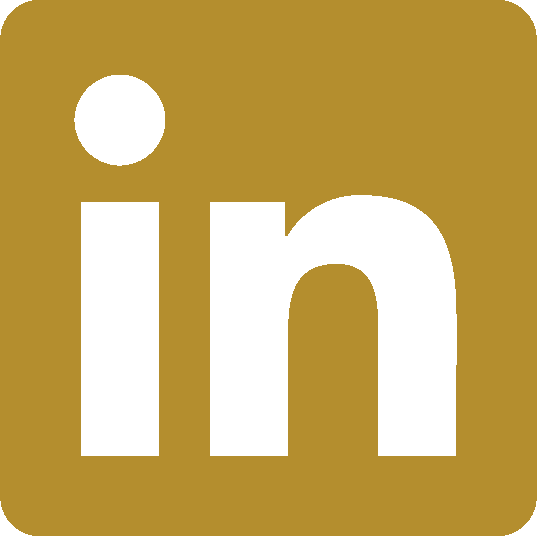Published by Dr. Brandon Richland, MD

Breast augmentation is a significant cosmetic procedure that can enhance the shape and size of the breasts. While the surgery itself is a pivotal step towards achieving the desired aesthetic results, the recovery period is equally crucial for a successful outcome. Navigating through the post-surgery phase requires a good understanding of the healing process and a commitment to following your surgeon’s recovery protocols.
The initial recovery phase typically involves managing discomfort, minimizing the risk of infection, and allowing the body the time it needs to heal properly. Adhering to post-operative care instructions, such as taking prescribed medications and attending follow-up appointments, plays an integral role in recovery.
Key Takeaways of Breast Augmentation Recovery Tips
- Successful recovery hinges on following post-surgery instructions and allowing proper healing time.
- Nutrition, hydration, and lifestyle adjustments are vital for a smooth recovery process.
- Emotional support and understanding the psychological impact are important for overall well-being.
Understanding Breast Augmentation Procedure
Breast augmentation, or augmentation mammoplasty, is a surgical procedure aimed at enhancing the size and shape of one’s breasts. It involves the placement of breast implants under the breast tissue or chest muscles.
After breast augmentation surgery, patients should expect a recovery period that can last several weeks. Immediately following the procedure, it’s normal to experience swelling and discomfort, which can be managed with prescribed pain medication. Patients typically receive an overview of post-surgical care which includes specifics on how to care for the incisions, manage pain, and when to follow up with their surgeon.

Types of Breast Implants
Two primary types of implants are used in breast augmentation:
- Silicone Implants: Filled with silicone gel, these implants are prized for their ability to mimic the feel of natural breast tissue.
- Saline Implants: These implants are filled with sterile salt water after being inserted, allowing for adjustable volume and a smaller incision.
Both types of implants come in various sizes, shapes, and textures, and the choice often depends on patient preference, body type, and the recommendations of their surgeon.
Initial Recovery Phase
Breast augmentation recovery process is crucial and typically involves managing discomfort and ensuring that the body has the right conditions to heal properly.
In the first 24 hours following this major surgery, patients often experience grogginess from the anesthesia and may have to cope with nausea. It’s vital to have someone available to assist with getting home and settling in. Rest is paramount during this period, and patients are advised to sleep in an elevated position to help reduce swelling.
Managing Pain and Discomfort
Pain medication prescribed by the surgeon should be taken as directed to manage pain and discomfort. It’s not uncommon to feel pain, particularly where the incisions were made, but the medication should keep it at a tolerable level.
Post-Operative and Long Care
After a breast augmentation, proper post-operative care is essential for a smooth and speedy recovery.
One must carefully monitor the incision sites to prevent infection and ensure optimal wound healing. Use ointment as prescribed to keep the area moist and promote skin restoration. Incisions should be covered with a bandage or gauze as directed, and changes should be made with clean hands to keep the area sterile.
Managing Swelling and Bruising
Swelling and bruising are common post-surgery symptoms. To manage these, apply ice packs or cold compresses in intervals for the first 48 hours and consider wearing a compression garment if recommended. Elevate the chest area to reduce swelling, and avoid any activities that may strain the muscles or skin around the breast incision.
Medications and Follow-ups
Prescribed antibiotics should be taken as directed to prevent infection. Pain relief medications should also be used according to the surgeon’s instructions. Scheduled follow-up appointments are crucial, they allow the surgeon to assess recovery progress and address any concerns. Attend all appointments and consult the healthcare provider if any issues arise.

Right Support Garments
Selecting the appropriate support garments is critical for post-operative comfort and support. Patients are usually advised to wear a sports bra or a specialized post surgical bra. These bras provide gentle compression to help reduce swelling and support the breasts as they heal. They should be wireless, have front closures for ease of use, and be made of breathable material.
Exercise and Heavy Lifting Guidelines
When it comes to exercise, patients should avoid any heavy lifting or strenuous exercise for at least four to six weeks following surgery. They can engage in light exercise like walking immediately after surgery, which can aid in circulation and promote healing.
However, they should be careful not to raise their blood pressure or heart rate too much. It’s recommended to wait until the surgeon gives a clear approval before attempting more intense physical activities, like weightlifting or cardio exercises that target the chest area.
Nutrition and Hydration
Focusing on proper nutrition and hydration can significantly influence the breast implant recovery process. Consuming healthy foods and drinking enough water are key to ensuring a smoother healing journey.
Dietary Recommendations
Optimal healing post-surgery requires a diet rich in nutrients. Protein is crucial, as it aids in tissue repair and regeneration. Including lean meats, fish, fruits, vegetables, legumes and dairy products in one’s diet provides the necessary building blocks for recovery.
Fruits and vegetables, in particular, are packed with vitamins and antioxidants that can help reduce inflammation and promote healing.
Importance of Staying Hydrated
Hydration is equally important as diet for those recovering from breast augmentation. Water plays a pivotal role in the healing process, helping to transport nutrients to the cells and flush toxins from the body.
It also helps in managing swelling and possibly reducing the risk of complications. The goal should be to drink plenty of water throughout the day, going beyond the standard recommendation of eight glasses.
Frequently Asked Questions About Breast Augmentation Recovery Tips
1. What Can I Expect During the First Three Weeks of Recovery From Breast Enhancement Surgery?
During the initial 5-7 days, patients typically experience the most discomfort and are advised to rest. Over the next three weeks, the swelling and pain gradually subside, and energy levels begin to improve.
2. Are There Any Effective Methods for Reducing Swelling in the Days Following the Procedure?
Employing techniques such as applying cold compresses and wearing a supportive surgical bra can be effective in reducing swelling. Keeping the upper body elevated and limiting sodium intake also helps to manage post-operative swelling.
3. Could You Provide Some Advice for Balancing Rest and Activity After Receiving a Breast Lift With Augmentation?
Patients are generally advised to take things slowly and not rush recovery. Light activities like walking can be beneficial for circulation, but one should avoid strenuous exercises until the surgeon confirms it’s safe.

Conclusion and Summary of Breast Augmentation Recovery Tips After Surgery
Breast augmentation is a transformative procedure for many women, but it requires a commitment to proper care and patience during the recovery phase. By following these top tips and understanding breast augmentation recovery timeline, patients can ensure a safer, quicker, and more comfortable healing process.
Remember, while general advice is helpful, always follow the specific, board-certified plastic surgeon’s instructions tailored to your individual situation. Recovery is not just about waiting, it’s about actively participating in practices that promote healing and well-being.
Please note that this article is intended for informational purposes only and should not be construed as medical advice. Before making any changes to your treatments, please consult with your healthcare provider to discuss the appropriateness and safety of such changes.
Ready For Your First-Class Cosmetic Experience in Orange County (OC) California (CA)?
Are you located in one of these Orange County (OC) / Southern California cities?
Aliso Viejo, Anaheim, Brea, Buena Park, Costa Mesa, Coto de Caza, Cypress, Dana Point, Fountain Valley, Fullerton, Garden Grove, Huntington Beach, Irvine, La Habra, La Palma, Laguna Beach, Laguna Hills, Laguna Niguel, Laguna Woods, Ladera Ranch, Lake Forest, Los Alamitos, Mission Viejo, Newport Beach, Orange, Placentia, Rancho Santa Margarita, San Clemente, San Juan Capistrano, Santa Ana, Seal Beach, Stanton, Tustin, Villa Park, Westminster, or Yorba Linda?
Plastic Surgeon Dr. Brandon Richland, MD and our Cosmetic Aesthetics Team are ready to help you look and feel your absolute best.
Elevate your confidence and self esteem levels to unfathomable new heights!
Schedule your in-person consultation in our modern and luxurious offices in either Fountain Valley, CA (Main HQ) or our Newport Beach, CA office.
Do you live outside of Southern California or short on time? For your convenience, Virtual Consultations are also available.
Our warm and engaging Team of carefully selected Aesthetics Professionals will make you feel calm, cool, collected, and right at home throughout your entire consultation and surgery process.
Schedule Your Aesthetics Consultation here, or call us directly at 949-867-4496 today.
About the Author

Dr. Brandon Richland, MD is a respected Board Certified Licensed Plastic Surgeon in Orange County / Southern California specializing in cosmetic and reconstructive surgeries.
Driven by his passion for medicine, Dr. Richland obtained his Doctor of Medicine (M.D.) degree from the prestigious program at Saint Louis University (SLU) School of Medicine in 2013. His exceptional skills were recognized when he received the McGraw Hill / Lange Medical Student Academic Achievement Award, and graduated top of his class with Honors. For his undergraduate degree, he attended University of California, Los Angeles (UCLA) and graduated with Honors in 2009.
To further enhance his surgical expertise, Dr. Richland completed his Residency in Plastic Surgery at the University of California, Irvine (UCI) from 2013 to 2019 earning the Academic Achievement Award twice during this period. A total of 14 years in dedicated schooling and medical residency.
Dr. Richland is actively involved with healthcare and medical societies, as a Diplomate of the American Board of Plastic Surgery, a member of the American Society of Plastic Surgeons, American Society of Aesthetic Plastic Surgeons, and the California Society of Plastic Surgeons.
Contact Dr. Richland today by visiting RichlandMD.com, scheduling a cosmetic consultation, or by calling 949-867-4496 directly.
Cover Image Credit: Kanashkin / 123RF.com (Licensed). Photo Illustration by: Dr. Brandon Richland, MD.










